Fighter-interceptor F-106 and Su-15 "Keepers of the sky"


There is much in common between these two aircraft, both of them appeared at the height of the Cold War, becoming for many years part of the national air defense. At the same time, they failed, for a number of reasons, to oust other aircraft used as fighter-interceptors in this field. Aircraft were created on the basis of earlier designs. The “ancestor” of the F-106 was the Convair F-102 Delta Dagger interceptor.

Su-15 conducts its ancestry from earlier interceptors: Su-9 and Su-11.
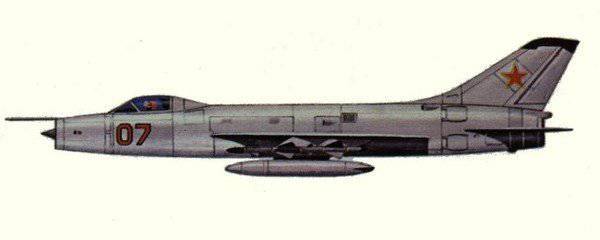
The career of these cars ended almost simultaneously, at the turn of the 80-90-x, when they were ousted by the 4-generation aircraft, F-15 and Su-27П.
The F-106 Delta Dart is a single-engine, single-engine, supersonic interceptor fighter with a deltoid wing. Created as a modification of the F-102A Delta Dagger, the aircraft originally received the designation - F-102B. The creation of the F-102B interceptor was submitted as an upgrade, but the number of changes made to the design was rapidly increasing. In fact, the fuselage, keel, and chassis were redesigned. The air intakes were made adjustable, and the air ducts were shortened to reduce pressure losses. Significant changes undergone cockpit. The F-102B inherited the wing from the “two”, but also modified it during mass production.
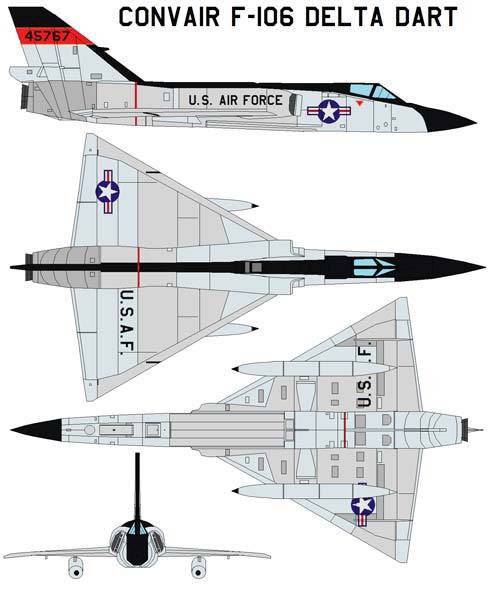
In the course of work, which it became obvious to the military that the presented machine was not just a modification of the “two”, but practically a new aircraft. Therefore, 17 June 1956, the aircraft received a "proper name" - F-106. The customer made it necessary to equip the interceptor with the MA-1 fire control system with the first on-board digital computer in the USA, to make it compatible with the Sage semi-automatic air defense system, to ensure that the 21500 m practical ceiling is reached, the flight speed is at least 2M at 11000 m height, 700 range km
The first F-106 (Serial No. 56-0451) was ready for flight tests at the end of 1956. December 26 at Edwards Air Force Base, Chief Pilot Richard L. Johnson, instead of celebrating Christmas, raised a new car into the air. The Edward-based test program included a total of 12 machines, designated JF-106A. Despite the fact that the aircraft were more powerful engines J75-P-9, the results of the flights did not please either the developers or the military, not much superior to the characteristics of the F-102. The maximum interceptor speed did not exceed 1,9M, and the ceiling - 17300 m.
The unwillingness of the fire control system, on which the main stake was made, the raw engine, the lack of basic characteristics - all this affected the number of machines ordered. As a result, instead of 40 squadrons on the F-106, Delta Dart decided to rearm 14. As a result, only 1000 remained from the originally planned 260 to build new interceptors. During serial production, the order was still slightly increased, and as a result 277 single-seat F-106A was built.
The mass-produced F-106 Delta Dart had refined air intakes with a thinner inlet edge, redesigned air ducts, which, together with the more powerful and reliable J75-P-17 engine, made it possible to achieve flight performance that met the customer's requirements. Now the officially declared speed was 2,311M, and it was believed that the flight with the 2,5M was fully accessible to the aircraft. During the establishment of the December 15 world record 1959 of the year (pilot Joseph V. Rogers), the aircraft showed a speed of 2455 km / h. Beating the achievement of G.K. Mosolov on Mikoyan E-66 (2388 km / h.) In May 1959, the F-106 Delta Dart began to enter the Air Force. The first new aircraft received 498-I squadron, based in Jeiger (piece. Washington).
In the first months of operation, a number of serious problems were identified, such as failures of generators, unsatisfactory operation of turbo starters, etc. In December 1959, a spontaneous dump of the cockpit lantern in the air occurred, after which the flights of all the cars were suspended.
The order for the construction of double cars, the firm "Konver" received another 3 August 1956 year. Initially, the aircraft was conceived as a purely training, so he was given the designation TF-102B, later changed to TF-106A. But during the work of the Air Force, it was clarified that this should be a full-fledged combat vehicle, with a full arsenal of weapons, and eventually the Spark became known as the F-106B.
The length of the fuselage "Sparky" remained the same as that of the original F-106 Delta Dart, and the second cabin was placed by reassembling some components of the onboard equipment and reducing the volume of the fuselage fuel tank. Spark was equipped with an AN / ASQ-25 armament control system, almost identical to the MA-1.
For the first time, the F-106B flew 9 on April 1958. A total of 63 “sparks” was built, and the total number of issued “Darts” reached 340. F-106B began to ship 1959 to the troops in February.
In September, the 1960 of the year program began to bring all previously built aircraft to the standard of the latest series. For the year of improvements, factory brigades made 67 changes to the design and 63 - to the control system weapons. In addition to improving existing systems, the set of improvements included the installation of an infrared station in the nose of the interceptor, capable of operating at low altitudes and against the background of the earth. In addition, the aircraft received a brake hook to exclude rolling out of the runway in case of an emergency landing. The cockpit was equipped with a light-and-heat shield for the case of the use of NAR "Gini" with nuclear warhead. The arsenal of avionics supplemented the jamming station and the radar receiver, and the MA-1 radar noise immunity system was significantly improved.
In 1965, the F-106 Delta Dart received a new radio navigation system TACAN, the weight and overall dimensions of the blocks of which became smaller on the 2 / 3 in comparison with the old ones. In 1967, the fighters equipped with a system for refueling in the air and new outboard fuel tanks with a capacity of 1360l. In contrast to the previously used new PTB were designed for operation in the entire range of altitudes and flight speeds, therefore, they were extremely rarely dropped. The behavior of the aircraft with new tanks has not changed.
The experience of the Vietnam War showed that reliance only on missile weapons was only a theory. To effectively use the F-106 Delta Dart in close combat, it was necessary to equip it with a cannon, and at the end of 1960-s it was done on the initiative of the developer. Instead of the completely useless NAR "Gini", a six-barrel 106-mm M20 "Volcano" cannon with 61 ammunition was installed on the F-650. Its trunks went beyond the fuselage lines and were closed by a fairing, and the drum with cartridges occupied part of the missile compartment, while still having the opportunity to use four UR Falcon. To use the gun aircraft equipped with an optical sight. In addition, the F-106 Delta Dart received a new flip part of the lantern with improved visibility (without a center bar), and instead of “classic” devices with dial scales, tape-type indicators were installed.
Low unit load on the wing, and high thrust-to-weight ratio allowed the pilots to win victories in training battles over other American vehicles of those years. F-106 proved its exceptional ability to simulate the aircraft "enemy" with triangular wings (obviously, first of all, the MiG-21).
The clashes between the F-106 and the F-4 Phantom demonstrated a clear superiority in maneuverability of the first. True, the pilots noted that the "Phantom" had a more reliable radar and better missile weapons (SD "Sidewinder" and "Sparrow").
There were, of course, this aircraft and disadvantages. Basically, they were expressed in the difficulties during landing - high speed, long path length. Pilots and small wheel sizes for such masses of the car and landing speed were noted. As one pilot confessed: “if you had a tire burst, the chance of a crash was very great.” The landing angle on the 15 was also close to a critical value — on the 17, the plane struck the tail with concrete.
At high supersonic speeds, the plane became unstable in terms of travel, which sometimes led to a tightening in a flat spin. Therefore, in operation, the flight speed was limited by the number of 2M.
During operation, the originally designated airframe resource, comprising 4000 h, was doubled. This confirms the reliability of the design of the aircraft, and indirectly - the high raid of American fighter pilots.
The crash statistics are as follows: over the years of 29 operation, 340 112 machines were lost in accidents and catastrophes, including 17 “parks”. Almost a third of all built F-106! In percentage terms, this figure is worse than the previous F-102. For comparison, the losses of the British “Lightning” were 32%, and those who won the ill-fame of F-104 - 27,5%.
Unlike the F-102, Delta Dart mainly guarded the airspace of the United States and Canada. Outside of North America, they were permanently based only in Iceland and only occasionally pulled out for short visits to US bases in Germany. In addition, in February 1968 of the year, during the incident with the reconnaissance vessel Pueblo off the DPRK coast, the fighters of the 318 squadron deployed briefly at Osan Air Base in South Korea.
During the Vietnam War, the Americans considered the possibility of using Delta Dart in Indochina and even began to develop a camouflage scheme. However, given the low efficiency of the use of "twos" in Vietnam, as well as the significant cost of F-106, there was no place for him in that conflict. But the interceptors were at the forefront of the Cold War, constantly accompanying Soviet bombers.
The aircraft had a short reaction time when on combat duty. It took a total of 2 mines 45 seconds from the “Alarm” signal to take off. The duration of the interception and target tracking was usually 100-120 min.
LTH F-106 Delta Dart:
Wingspan, m 11,67
Length, m 21,56
Height, m 6,18
Wing area, m2 64,8
Weight, kg
empty 10730 aircraft
normal takeoff 16100
maximum take-off 17350
Engine 1 turbojet engine Pratt & Whitney J57-P-17
Thrust, kgf 1 x 11130
Maximum flight speed, km / h 2450 (M = 2.31)
Cruising Skrost, km / h 980
Practical ceiling, m 17400
Maximum range, km 4350
Practical range, km 920
Practical ceiling, m 17400
Crew 1
Armament: 1x 20 mm gun M61 Vulcan, 4 air-to-air missiles AIM-4 Falcon, 2 unguided AIR-2A Genie with nuclear warhead (up to 1985)
Beginning with 1981, Delta Dart gradually began to remove the fighter squadrons from service, replacing the more advanced F-15 and F-16 and transferring them to the National Guard.
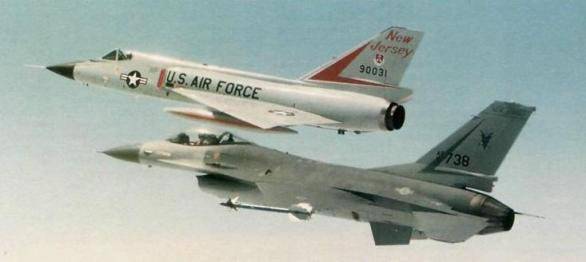
The last unit, the 119 Fighter Squadron, parted with the F-106 7 on July 1988 of the year, sending the remaining 3 of the aircraft to the storage base at Davis Montand, where they transferred all of the F-106 from the 1982 onwards. After serving F-106, they were re-equipped into QF-106A unmanned targets.
The first flight of the converted "dronetook place in July 1987. Until the end of 1994, 181 aircraft were converted into targets. New targets replaced the more "ancient" QF-100 "Super Saber".
Several aircraft continued to be used in various NASA projects, including two QF-106. These machines, both in unmanned and manned versions, attracted to the Eclipse project — the development of reusable means of launching a payload into orbit. In the course of the experiments, the unmanned aircraft was towed on a long cable by the towing vehicle NC-141A, then uncoupled and carried out an independent landing. It was assumed that in this way the Astroliner spacecraft would fly up into the air, which, having separated from the Boeing 747, would start the engines and “rush to the stars”. Experiments were conducted from 20 December 1997 of the year to 6 February 1998 of the year, after which QF-106 was returned to Davis Montand.
As you know, in the second half of the 1950s for the Soviet aviation hard times have come in connection with the addiction of the country's leadership to missiles (anti-aircraft, in particular). Both the military and the designers were insistently “recommended” to review the rearmament programs of the Air Force and Air Defense. Despondency reigned in the aviation industry; the prospects for combat manned aviation were seen in black. In 1958, the State Committee for Aviation Engineering (GKAT) withdrew from the development of 24 topics on aircraft and 12 on engines, and the next year - another 21 and 9, respectively.
At the same time, new attack aviation complexes appeared in the West, forcing the Soviet military to develop retaliatory measures. In particular, they required air defense fighters with large intercept lines capable of attacking targets in the forward hemisphere. Given the sympathies of the political leadership of the country, it was almost impossible to raise the question of creating any new aircraft, it could only be a question of modernizing the existing machines. At the same time, with respect to the interceptor, one should have promised solemnly that he would only be the carrier of air-to-air missiles, and his flight would become automated from takeoff to landing.
In this situation, in March 1960, headed by P.O. Sukhy OKB-51, began work on creating an aircraft that received the factory code T-58. A new theme was designed as a further modernization of the T-3-8М complex (Su-11). The plane planned to equip the radar with a large range and angles, as well as rockets with higher performance.
Due to the large size, the new radar could not be squeezed into the nose of the Su-11, equipped with an axisymmetric air intake. Under the station required to allocate the entire nose of the aircraft, therefore, go to the side air intakes. As a result, the new interceptor acquired the classic look of a jet aircraft of the 2 generation.
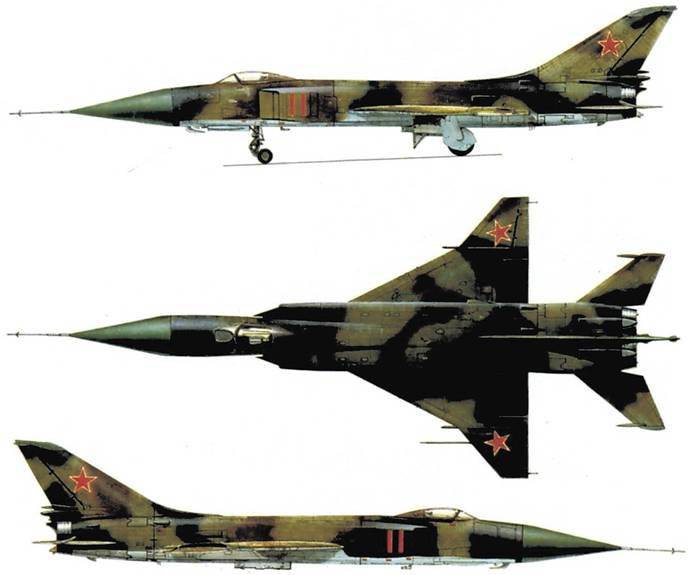
Externally, the T-58 was significantly different from its predecessors. The Orel-D radar antenna, which had a large diameter, could not be placed in the air intake cone, therefore the nose section was completely occupied by it. Air intakes, shifted back, became side. The power plant of the aircraft included two turbojet engines Р11-Ф2С-300 developed by design bureau C.K.Tumanskogo, with afterburner for 6200 kgf. (the last series used Р13-300 - 6600 kgf.) In addition to the engines, the fuselage contained: a pressurized cabin with a lantern, fuel tanks-compartments and other equipment. In the tail section four brake flaps were installed. The wing of a triangular shape in the plan had an angle of sweep 60 gr. along the leading edge.
After the completion of state tests in April 1965, the aircraft was commissioned as part of the ARKP Su-15-98. The complex was designed to intercept air targets with a speed range of 500-3000 km / h and heights of 500-23000 m. The interceptor was brought to the meeting area with the aim and before detection of its radar was performed using ground-based automated guidance. Interception of targets, aiming and pointing missiles with CGS carried out radar. The TGS missiles had a different principle of targeting — the infrared (thermal) radiation, which they perceived, came directly from the target.
To reduce the inductive resistance and improve the take-off and landing characteristics from the 11-series of the aircraft, the wing design underwent changes: the area was increased to 36,6 m2, and the leading edge of the end part received a break at 45gr. and aerodynamic twist. Tail plumage with sweep angle 55gr. along the 1 / 4 line of the chords, it included a full turning stabilizer and a fin with a rudder.
Control of the aircraft was carried out with the help of boosters, included in an irreversible pattern. Four autonomous hydraulic systems provided cleaning and release of the chassis, flaps, brake flaps, control of air intakes and shutters of engine jet nozzles, power supply of the radar antenna drive. The aircraft was also equipped with three autonomous pneumatic systems. Pneumatic systems were intended for main and emergency braking of wheels, emergency release of chassis and flaps, pressurization of hydraulic reservoir, etc.
The total capacity of the fuel system with PTB - 8060 l. The necessary conditions for the work of the pilot in the cockpit, as well as airflow and pressurization of blocks of radio equipment were provided by air conditioning. To leave the plane in an emergency, the cabin was equipped with a KS-4 ejection seat, which provided crew rescue on the run and run at a speed of at least 140 km / h, and in flight at altitudes up to 20000 m and instrument speeds up to 1200 km / h.
Electronic equipment included equipment: radio communications (radio station R-802), radio navigation (automatic radio compass ARK-10, marker radio receiver MRP-56), identification (ODS-57, SRZO-2M), guidance (APR) and BR, BR; Orel-DM). The armament consisted of: two UR P-8М or P-98 class with CGS and TGS, under the wing on launchers of the 1-8 launcher.
Starting from 1973, all airplanes in operation and all newly manufactured were equipped with two PD-62 pylons for two P-60 missiles with TGS. After finalizing the ventral pylons BDZ-59FC, it became possible to suspend two unified cannon containers UPK-23-250 on them.
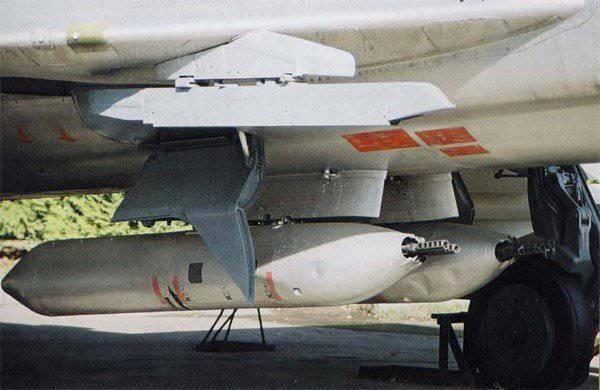
Each container included a double-barreled fixed cannon GSH-23L caliber 23-mm developed by the Design Bureau VPGryazev and AGShipunova. Rate of fire - 3000-3400 shots per minute, ammunition - 250 shells.
In 1969, the state tests of the upgraded Su-15T interceptor with Р13-300 engines began. It differed from its predecessor by a more advanced radar, more precisely, a radio control system, extended equipment (installed: RSBN-5С short-range navigation system, radar exposure warning station - SPO-10 and automatic control system SAU-58) reduced to three by the number of hydraulic systems .
Su-Xnumhut. At the end of the 15-s based on the Su-60 interceptor, the Su-15UT, a two-seat training aircraft without radar and armament, is created and launched into serial production.
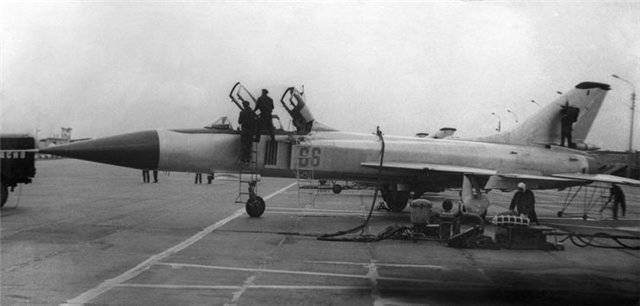
In the process of state tests in the system of ARKP Su-15-98 revealed significant shortcomings. It was finalized and installed on the interceptor, designated Su-15TM. The Su-70TM interceptor launched into mass production at the beginning of the 15-ies for many years remained one of the main fighters of the country's air defense aviation. The Su-15-98М ARKP, which included the aircraft, together with the ground-guidance complex in the manual, semi-automatic (director) and automatic modes, ensured the interception of air targets with the 500-2500 km / h altitude range and the 500-24000 m altitude.
At the end of the 60-beginning of the 70, the Su-15 interceptors, together with the Su-9 and Su-11, formed the basis of the aviation of the Soviet air defense forces, being the most massive modern interception complexes. By the middle of the Su-15 were in service with the 29 fighter regiments, which accounted for more than a third (!) Of the front air units of the air defense forces.
LTH:
Modification of the Su-15TM
Wingspan, m 9.43
Aircraft Length m 22.03
Aircraft height, m 4.84
Wing area, m2 36.60
Weight, kg
empty 10760 aircraft
normal takeoff 17200
maximum take-off 17900
Engine type 2 TRDF P-13-300
Maximum thrust, kN 2x 65,70
Maximum speed km / h:
off the ground xnumx
at height 12000 m 2230
Ferry range, km 1700
Practical range, km 1380
Combat range, km 725
Practical ceiling, m: 18100
Maximum operating overload 6.5
Crew 1
Armament:
Combat load - 1500 kg on 6 suspension units:
Two medium-range mid-range air-to-air missiles with semi-active radar and infrared guidance systems P-98 (up to 20 km) and two short-range missile systems P-60 with an infrared guidance system. Instead of PTB, two containers UPK-23-250 with guns GSH-23L (23 mm, 250 shells) can be suspended. Suspension of two bombs FAB-250 or up to 2 of blocks UB-16-57 with NAR type C-5 is allowed
or two large-caliber NARs of type C-24.
In the process of serial production of the Su-15TM, its equipment and weapons were repeatedly subjected to modifications and modernization. On the aircraft of the first series were used missiles P-98, in the future they were replaced by P-98M.
The radome of the radar antenna was replaced with an ovivable radome. This made it possible to eliminate the interference on the radar screen caused by a false reflection of the signal from the inner surface of the conical fairing.
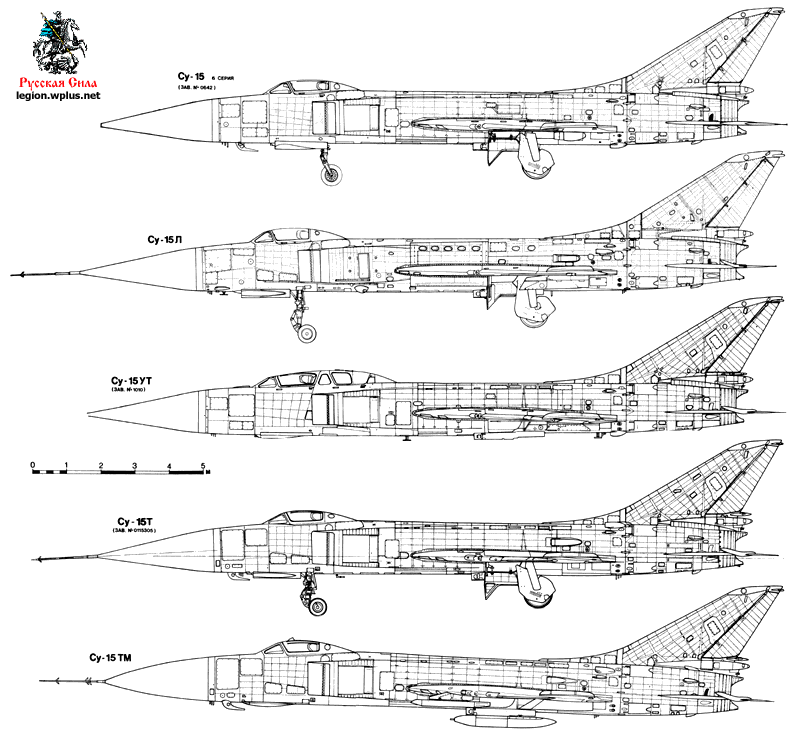
This aviation complex was repeatedly used to curb violations of the USSR state border. So, 20 on April 1978, the plane of the South Korean airline KAL, flying from Paris to Anchorage (Canada), dodging many hundreds of kilometers from the highway, crossed the USSR border in the region of Murmansk. The intruder was intercepted by the Su-15TM fighter, did not respond to the set signals to follow him and continued flying, moreover, he increased his speed and, with a decrease, turned to the border with Finland. Then the weapon was used. A damaged Boeing 707 made an emergency landing on the ice of a frozen lake near the town of Kem. 108 passengers died from 2 passengers.
It would seem that the airline KAL should take measures to exclude such, but after five and a half years everything happened again. On the night of September 1, 1983, en route from Anchorage to Seoul, violated the state border in the Kamchatka Peninsula and followed the USSR territory for about two and a half hours. The crew did not respond to fighter-interceptor signals.
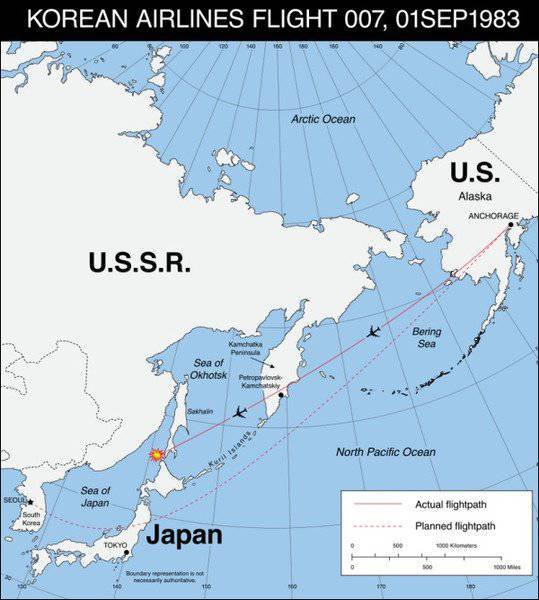
At the command of the control room, the pilot Osipovich, who was piloting the Su-15TM, used a weapon (at this point the deviation of the airliner from the route was about 660 kilometers), after which the plane fell into the sea. 269 people died.
18 July 1981 of the year the plane CL-44 of the Argentine airline “Transportes Aereo Rioplatense” made the flight Tel Aviv-Tehran, carrying weapons for Iran. Apparently, he inadvertently invaded the airspace of the USSR from Armenia. Captain Kulyapin V.A. was raised for interception. on SU-15TM. Accompanying the intruder, he, according to the international code, gave the intruder signs to follow him. But the one without any reaction continued to fly towards the border. There was no time left to attack the P-98 missiles, and Kulyapin rammed the offender with a fuselage in the stabilizer. CL-44 went into a tailspin and fell, the crew member 4 died. Pilot Su-15-th ejected and survived. Subsequently, he was awarded the Order of the Battle of the Red Banner. This was the second and last ram in stories jet aircraft.
After the collapse of the USSR, aircraft of this type were at the disposal of several “sovereign republics”. The Su-15 type aircraft (Su-15TM) were in service with the Air Defense Forces and the USSR Air Force until 1991; in the armed forces of the Russian Federation - up to 1994, and in Ukraine - up to 1996, inclusive. The last combatant unit, which was armed with Su-15 type aircraft, was the air regiment of the Ukrainian Armed Forces, based at the Belbek airfield in the Crimea.
Based on:
http://www.combatavia.info/index1su15.html
http://www.f-106deltadart.com/
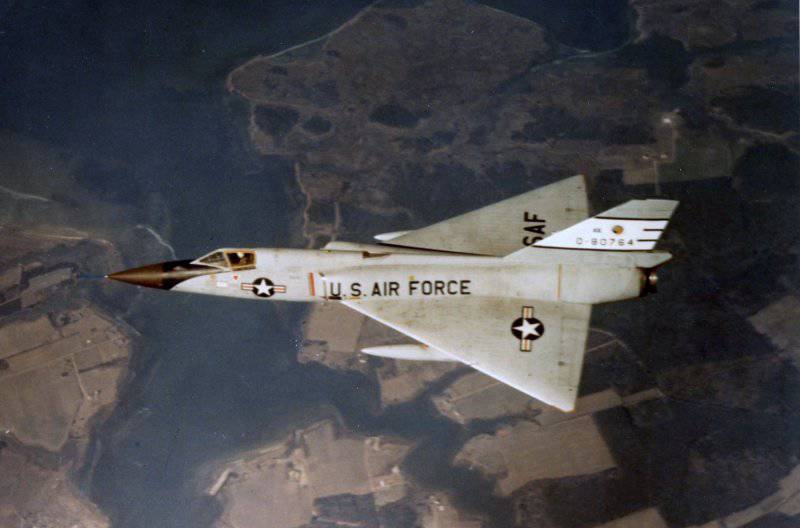
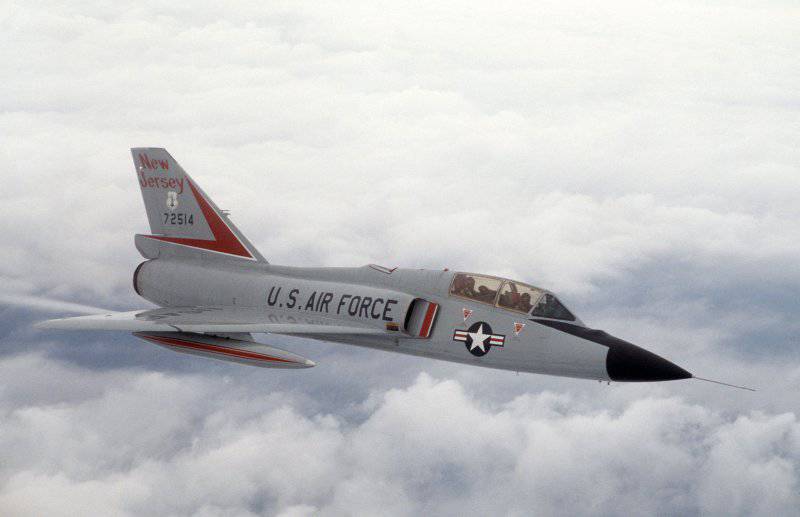
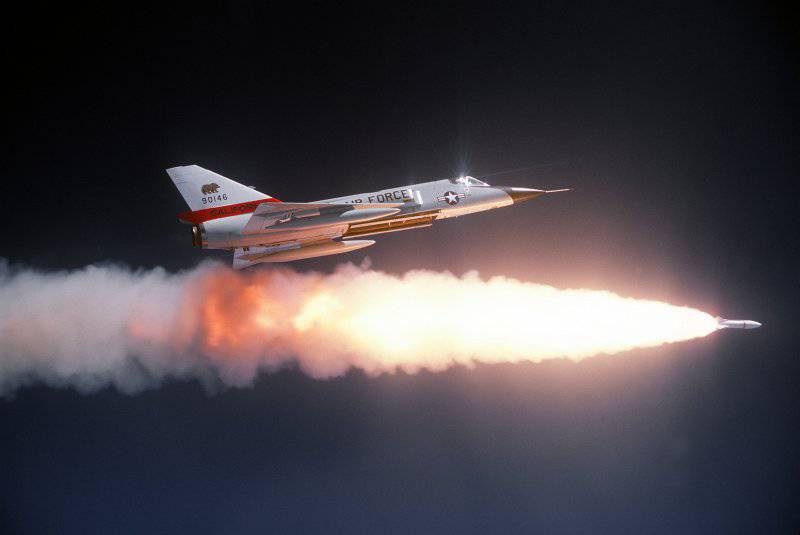
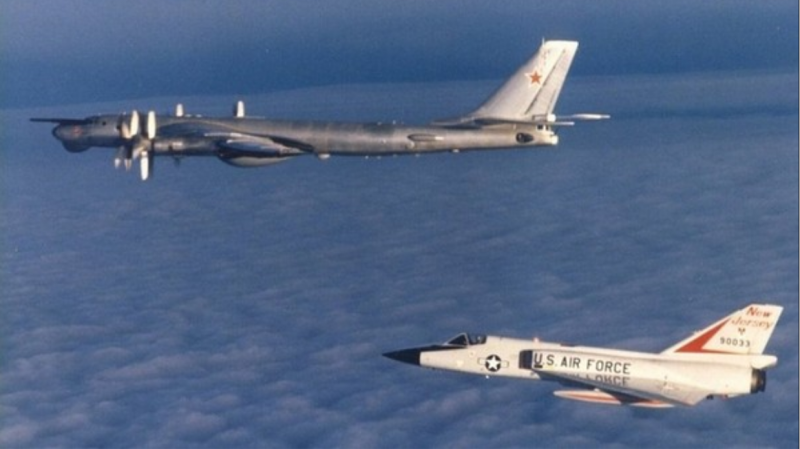
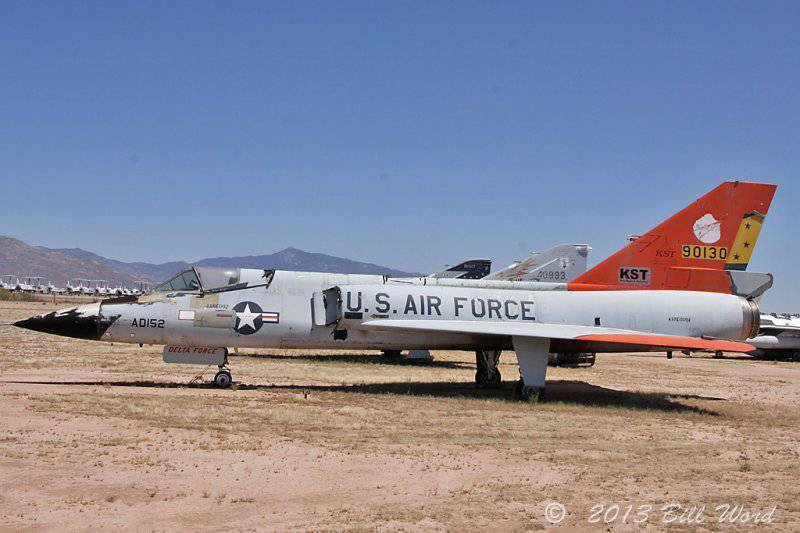
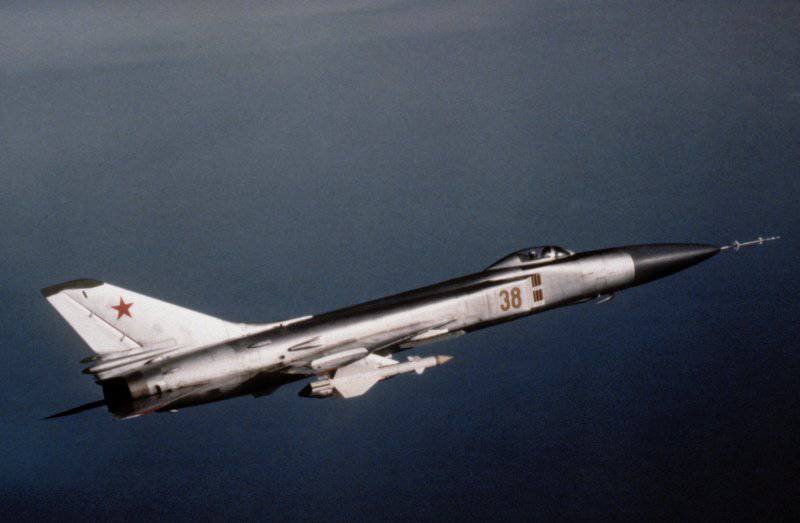
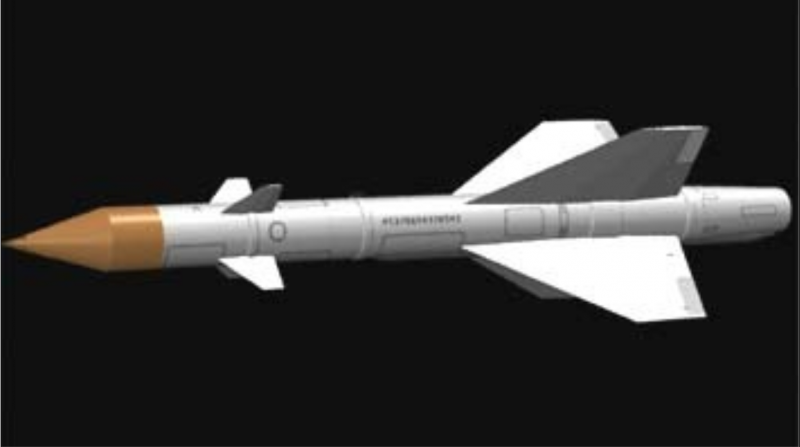
Information